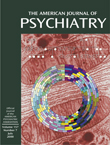Gender Differences in Mood and Anxiety Disorders: From Bench to Bedside: American Psychiatric Press Review of Psychiatry, vol. 18
Moreover, one of the areas with greater activation in women compared with men during induced sadness was the mesial prefrontal cortex, an area that has been shown to be hypoactive in patients with depression.…Although they represent only indirect evidence, these findings suggest that women may have some vulnerability to depression based on differential functioning of the limbic system. (p. 23)
A few clinical studies have yielded findings consistent with these data, suggesting that estrogen can blunt anxiety. Subclinical anxiety symptoms are reduced in postmenopausal women receiving estrogen replacement therapy…and estrogen appears to blunt autonomic (heart rate and blood pressure) responses to stress in postmenopausal women.…There have been no clinical studies of the effects of estrogen treatment in patients with clinically diagnosed anxiety disorders. (p. 63)
An early investigation evaluated the effects of estrogen versus placebo on personality and functional impairment in older women (ages 60–91 years).…The Hospital Adjustment Scale (HAS)…was used to measure changes in interpersonal relationships and functioning, self-care, social responsibilities, and activities. Compared with women assigned to placebo, women assigned to estrogen improved on all measures and sustained better functioning over time. However, it was not clear whether the benefit seen with estrogen was secondary to estrogen’s mood-elevating properties or attributable to its salutary effects on cognitive functioning. (p. 113)
Information & Authors
Information
Published In
History
Authors
Metrics & Citations
Metrics
Citations
Export Citations
If you have the appropriate software installed, you can download article citation data to the citation manager of your choice. Simply select your manager software from the list below and click Download.
For more information or tips please see 'Downloading to a citation manager' in the Help menu.
View Options
View options
PDF/EPUB
View PDF/EPUBGet Access
Login options
Already a subscriber? Access your subscription through your login credentials or your institution for full access to this article.
Personal login Institutional Login Open Athens loginNot a subscriber?
PsychiatryOnline subscription options offer access to the DSM-5-TR® library, books, journals, CME, and patient resources. This all-in-one virtual library provides psychiatrists and mental health professionals with key resources for diagnosis, treatment, research, and professional development.
Need more help? PsychiatryOnline Customer Service may be reached by emailing [email protected] or by calling 800-368-5777 (in the U.S.) or 703-907-7322 (outside the U.S.).

